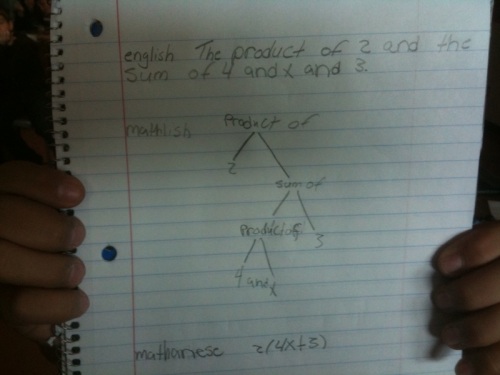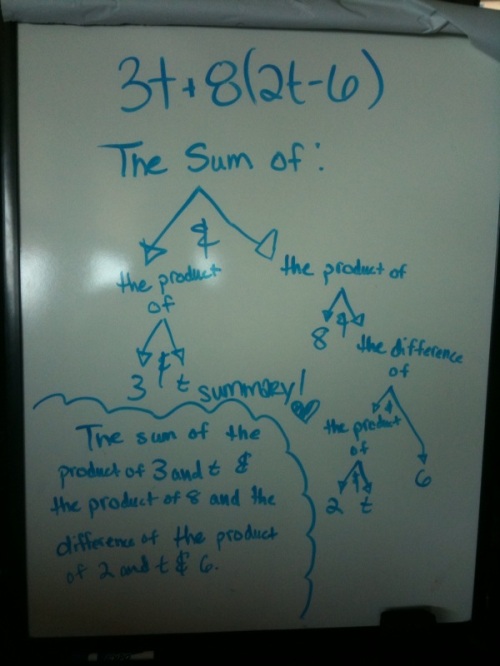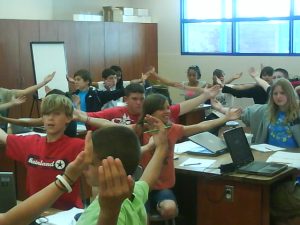Yesterday I had a few students absent and we did a lot of examples involving multiplying binomials, factoring and solving quadratics by completing the square. It was one of those lessons that “just happened.” I had one idea I wanted to nail down and it kinda morphed into a bunch of examples. I made up most of the examples on the fly because I was just gauging their reaction and taking what they gave me. So believe me when I say, “they wasn’t the pertiest lookin’ notes ya ever did see.”
Apparently, they were effective, though. The countenance of the class went from chin-on-hand-it’s-Friday-I’m-tired-here-we-are-now-entertain-us to thank-you-sir-may-we-try-another-cuz-this-is-some-cool-stuff-and-I’m-gettin’-it.
Its tough to reproduce lessons like that so I exported the notes to .pdf and emailed them to the absent students.
I just received this email from one of the recipients:
“Thanks for the notes! They will really help. I do have one question though; did you have to take time specifically out of the lesson to take the pictures or some other program that did them for you? I’m asking this because I think that if you did this every time we learned something new and posted it on your website[s], it would be a good resource.”
So I told him I slaved over my computer all of 30 seconds to export and email as an attachment. Which leads me to my question:
I have always taken a “students gotta take responsibility for their notes and review them regularly” kind of approach which has prevented my from exporting and posting the chicken-scratch covered slides from class. But if posting them is going to help them learn, should I care about the personal responsibility they take on (or don’t take on) in regards to their own note taking?
Whatdaya think?
Note: if you’re interested in what a spur-of-the-moment-ugly-as-heck-yet-equally-effective lesson in my class looks like on static slides, hit me up in the comments and I’ll update the post with a link. I’m posting this from my phone and won’t have access to the notes until Monday.









Recent Comments